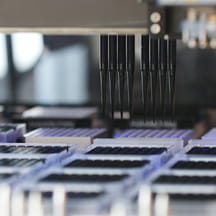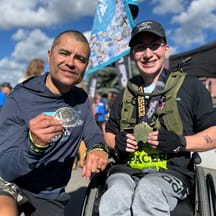For decades, technological advancements in ventricular assist devices (VADs) have allowed adult heart patients to live longer, healthier lives. This has not always been the case for children.
Vivian Dimas, M.D., director of interventional cardiology at Children's Health in Dallas and assistant professor at UT Southwestern, is determined to change that. She's working with VAD manufacturers to develop an FDA-approved device specifically for pediatric use. Her mission—to adopt widespread use of this device to improve the outcomes of pediatric congenital heart defect patients everywhere.
Children's Hospitals Today caught up with Dimas to discuss her mission. Here's an excerpt of that conversation.
What are the challenges you face in bridging the gap between the VAD technology available for adult and pediatric heart patients?
VADs were first created for adult cardiac support—typically of the left ventricle. Those VADs were much too large to place in children. As the adult technology improved, we started to extrapolate those devices down—taking adult size devices and figuring out how to make them work in children. But it's still really kind of like trying to fit a round peg into a square hole.
The money needed to develop that type of technology specifically for children is so great and the volume of patients who would be treated is so small that it has been very difficult to get companies to buy into that.
Of course, that's a challenge pediatrics faces for almost everything—our numbers just aren't as big so it's not feasible for the companies. When you're talking about such small numbers, just getting enough patients into a trial to demonstrate safety and feasibility becomes challenging.
You and your team have had success—particularly in developing percutaneous VADs—by resizing components from FDA-approved adult VADs for use with pediatric patients. Tell us more about how that approach has yielded results.
It's been a mission to try to figure out how to make that happen. It's one of those things where you start to do it, you gain experience and then you write about it. Then we go to different centers around the country to help them get a program started by telling them our experience—our techniques, pitfalls, things to look out for, patient selection and all that stuff.
It has taken off as people have had more success. The use of these percutaneous devices has increased significantly just based on putting that data out there and now it's a very accepted method of support for children. At the end of the day, that's the goal.
Of course, patients with congenital heart defects can pose an added layer of complexity to the successful implantation of a VAD. How does a cardiac care team adjust its approach for these specialized cases?
It's literally every single time. Every single time we have a congenital heart defect patient it's a multidisciplinary approach—let's sit down and look at it together. Maybe they've had their aorta operated on, so the angle is a little bit different, or maybe they had a hole in their heart and that patch makes the catheter go backwards. There are a lot of unusual anatomic configurations and then there's the flip side of access because these patients have often had multiple procedures and catheterizations. It's truly a multidisciplinary sit-down discussion every time one of these patients comes in.
It sometimes requires adjusting and improvising our approach. If we can put in this big catheter but it cuts off blood flow and we lose leg function, that's not a viable option. We want a survivor, but what we call an intact survivor—that means brain function, both legs intact, kidneys working and all of that. The goal is real survival—not just a number on a stat sheet. We want to send the kids home to their parents the way they brought them in, or as close to that as we can.
When you can save their child and they can go home and they're just the kid they brought in, it's hard to explain the emotions. But the look on the parent's face, it's the best feeling in the whole world.


